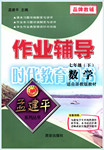题目内容
Wisconsin Historical Museum
30 N. Carroll Street on Madison's Capitol Square
Discover Wisconsin's history and culture on four floors of exhibits. Open for public programs. Admission is free.
Open Tuesday through Saturday, 9:00 am -- 4:00 pm.
(608) 264-6555 www.wisconsinhistory.org/museum
Swiss Historical Village
612 Seventh Ave., New Glarus
The Swiss Historical Village offers a beautiful look at pioneer life in America's heartland. 14 buildings in the village give a full picture of everyday life in the nineteenth-century Midwest.
Tue.—Fri., May 1st –October 31st , 10:00 am—4:00 pm. Admission is $20.
(608) 527-2317 www.swisshistoricalvillage.com
Artisan Gallery(画廊) & Creamery Café(咖啡馆)
6858 Paoli Rd., Paoli, WI
One of the largest collections of fine arts in Wisconsin. Over 5000 sp. ft. of exhibition space in a historic creamery. While visiting enjoy a wonderfully prepared lunch at our café overlooking the Sugar River. Just minutes from Madison!
Gallery open Tue. –Sun., 10:00 am—5:00 pm.
Café open Wed. –Sat., 11:00 am –3:00 pm.
Sun. brunch with wine, 10:00—3:00 pm.
(608) 845-6600 www.artisangal.com
Christopher Columbus Museum
239 Whitney St., Columbus
World-class exhibit –2000 quality souvenirs(纪念品) marking Chicago's 1893 World Columbian Exhibition. Tour buses are always welcome.
Open daily, 8:15 am – 4:00 pm.
(920) 623-1992 www.columbusantiquemall.com
1.Which of the following is on Capitol Square?
|
A.Wisconsin Historical Museum. |
|
B.Swiss Historical Village. |
|
C.Artisan Gallery & Creamery Café. |
|
D.Christopher Columbus Museum. |
2.Where can you go for a visit on Monday?
|
A.Wisconsin Historical Museum. |
|
B.Swiss Historical Village. |
|
C.Artisan Gallery & Creamery café. |
|
D.Christopher Columbus Museum. |
3.Where can visitors have lunch?
|
A.At Wisconsin Historical Museum. |
|
B.At Swiss Historical Village. |
|
C.At Artisan Gallery & Creamery Café. |
|
D.At Christopher Columbus Museum. |
4.We learn from the text that ________.
|
A.Swiss Historical Village is open for half a year |
|
B.Christopher Columbus Museum overlooks(俯视) a river |
|
C.Tickets are needed for Wisconsin Historical Museum |
|
D.Artisan Gallery & Creamery Café are open daily for 4 hours |
1.A
2.D
3.C
4.A
【解析】
试题分析:
1.A 细节题。根据第一段第一行30 N. Carroll Street on Madison's Capitol Square
说明Wisconsin Historical Museum.是在这里故A正确。
2.D 推理题。根据最后一部分Open daily, 8:15 am – 4:00 pm.说明Christopher Columbus Museum天天都开放的,故D正确。
3.C 细节题。根据第三部分While visiting enjoy a wonderfully prepared lunch at our café overlooking the Sugar River. Just minutes from Madison!说明C正确。
4.A 推理题。根据第二部分的Tue.—Fri., May 1st –October 31st ,说明A正确。
考点:考查广告布告类阅读
点评:本文是一则广告,介绍了四个旅游景点的具体的情况。对于广告类阅读,考生可以先看题目,再读文章,这样就可以有的放矢,提高阅读的速度和效率。

 作业辅导系列答案
作业辅导系列答案 同步学典一课多练系列答案
同步学典一课多练系列答案